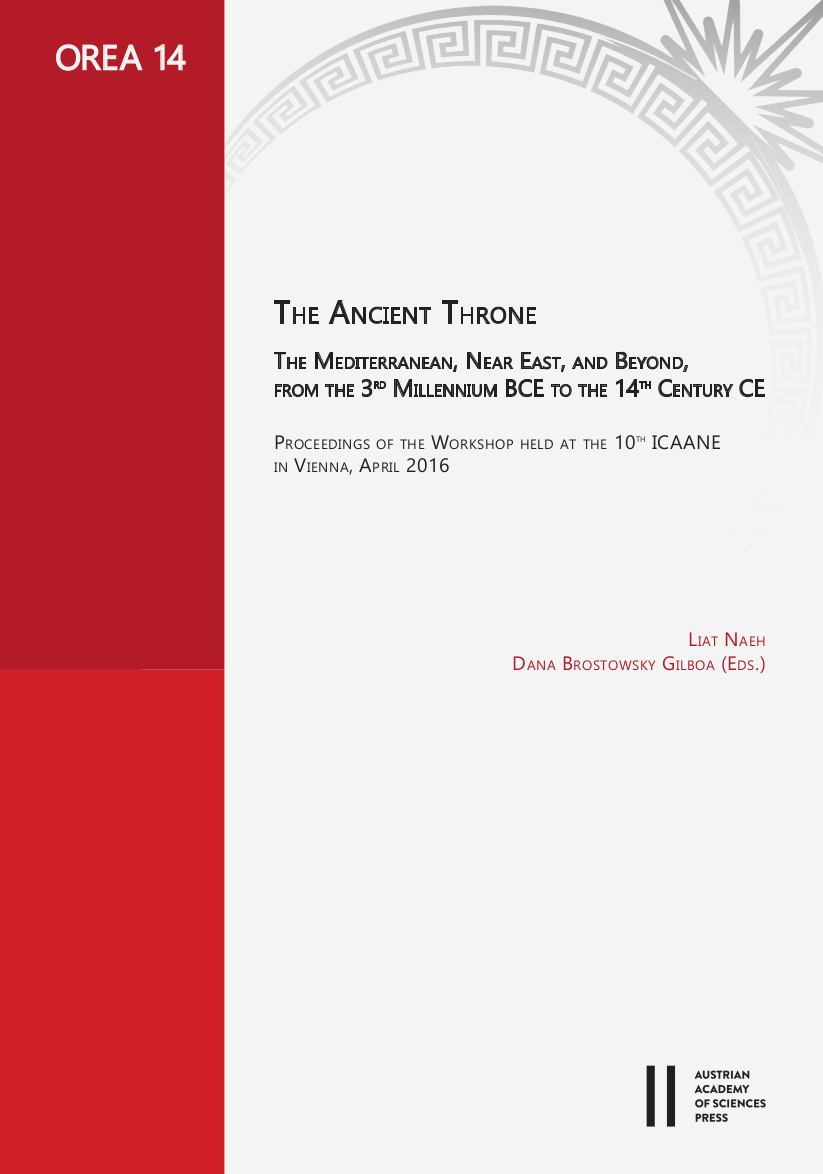
The Ancient Throne. The Mediterranean, Near East, and Beyond, from the 3rd Millennium BCE to the 14th Century CE.Proceedings of the Workshop held at 10th ICAANE in Vienna, April 2016, pp. 37-60, 2020/09/02
Proceedings of the Workshop held at the 10th ICAANE in Vienna, April 2016
The Bronze Age Aegean lacks a clearly discernible iconography of rulership, permitting widely contrasting speculation on the character of Minoan society – that it was egalitarian, heterarchical, gynocratic or a theocracy overseen by priest-kings. That elites did exist is amply attested by mortuary, iconographic and architectural evidence, including the Throne Room of the Late Minoan palace at Knossos in which a centrally oriented throne with a mountain-shaped back is incorporated into the architectural fabric of the room. Iconographic representations of human figures holding sceptres and standing upon mountains as well as evidence for the increased palatial control of cultic activity at rural peak sanctuaries during the Neopalatial Period (1750–1490 BCE) emphasise an association between rulership and the mountainous landscape. Close analysis of seated figures within Minoan iconography reveals architectonic parallels to the Knossian Throne. Stepped structures, typically surmounted by seated female figures, function as abstract representations of the mountain form. It will be argued here that literal and metaphoric representations of mountain thrones in the form of the Knossos Throne and stepped structures function within an ideological program associating rulership with the natural landscape, thereby offering new insights into the construction of power in the Aegean Bronze Age.
Keywords: Minoan Crete, ruler iconography, throne, mountains, symbolic landscape